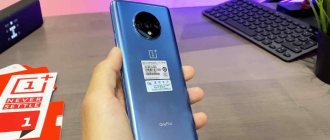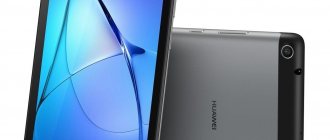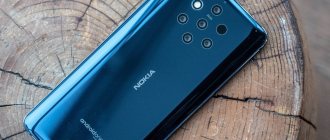What to look for when choosing?
For your information! Monitors differ in a number of characteristics, each of which is important. When purchasing a monitor, you should pay attention to the following parameters:
- Screen resolution. Standard small models have a resolution of 1280x1024 pixels, medium ones have a resolution of 1680x1050 pixels, devices from 30 inches have a resolution of 2560x1600 pixels.
- Viewing angle. This parameter is important if the monitor is purchased for watching movies. The optimal viewing angle at which the screen will be clearly visible to several people is 170 degrees.
- Contrast ratio. The 1000:1 ratio provides high quality images with good brightness, contrast and saturation.
- Monitor control. The convenient location of the buttons on the monitor helps you quickly adjust settings while working at the computer. This is especially important, for example, for gamers.
- Sizing and adjustment. The size (screen diagonal) is selected taking into account the width of the table on which it will stand. The ability to change the height and rotation of the monitor is also very important.
- Response time. Response time is the speed at which pixels respond to changes on the screen. Accordingly, the image quality when changing the picture (while watching video content and games) depends on the response time. The optimal value is 16 ms for ordinary users, 12 ms for fans of watching movies and TV series, 8 ms or less for professional gamers.
- Outputs and connectors. Of particular importance are the USB and HDMI ports. DVI and VGA output will be useful.
- Warranty and support. There must be a warranty period of at least a year, as well as a service center within the locality.
- Backlight type. LED is thinner, lighter, provides better contrast, and maintains color accuracy. However, this type is more expensive than LCD models.
Characteristics
| Diagonal | 34″ |
| Permission | 3440 × 1440 |
| Contrast | 3000:1 |
| Screen matrix type | V.A. |
| Update frequency | 144 Hz |
| Response time | 4 ms |
| Screen viewing angle | 178° |
| Screen coating | Glossy, anti-glare |
| Curvature | 1500R |
| Entrance | 2 × HDMI 2.0, 2 × DisplayPort 1.4. |
| Exit | Audio, AC |
| Weight | 8000 gr |
| Size | 810 × 520 × 242 |
Review of the best Xiaomi models
Among Xiaomi monitors there are models that are suitable for different users with different purposes for working at the computer. Let's look at an overview of these models.
Xiaomi Mi Surface Display 34″
Gaming monitor with modern *VA matrix, high resolution, flicker-free backlight and curved display.
The Xiaomi Mi Surface Display 34″ model is ideal for lovers of evenings watching movies and high-quality online games.
The device has good brightness, resolution, viewing angles and response time.
Important features include flicker-free backlighting, FreeSync support, optimal screen size and number of colors.
Specifications:
- resolution: 3440×1440;
- diagonal: 34 inches;
- matrix type: *VA;
- backlight: WLED;
- frame rate: 144 Hz;
- response time: 4 ms;
- Max. number of colors: 16.7 million;
- coating: glossy, anti-reflective;
- features: curved screen, FreeSync support, height adjustment, blue light reduction.
Advantages
- high image quality;
- weakening of blue color;
- attractive design;
- curved screen;
- Suitable for working at the computer, watching movies and playing games.
Flaws
- short DP wire included in the kit;
- high price;
- low white saturation.
Xiaomi Mi Display 23.8″
A budget device with an ideal price-quality ratio, high resolution, anti-glare coating and IPS matrix.
Widescreen LCD monitor Xiaomi Mi Display 23.8″ with a diagonal of 23.8 inches, WLED backlight, 1000:1 contrast ratio, external power supply and blue light reduction.
Specifications:
- resolution: 1920×1080;
- diagonal: 23.8 inches;
- matrix type: IPS;
- backlight: WLED;
- frame rate: 60 Hz;
- response time: 6 ms;
- coating: anti-reflective;
- features: weakening of blue color.
Advantages
- low price;
- convenient stand;
- high build quality;
- HDMI included;
- Stylish appearance, narrow frame.
Flaws
- low color rendering;
- no height adjustment or screen rotation;
- cannot be attached to the wall.
Xiaomi Redmi Display 1A 23.8″
A convenient, stylish, small monitor that is suitable for regular computer work, at a low price.
The Xiaomi Redmi Display 1A 23.8″ device is suitable for those who like to play computer games at an amateur level, for office workers, for those who prefer to watch movies through a computer.
This model has good characteristics for its price, but it is not worth considering for professional use.
Specifications:
- resolution: 1920×1080;
- diagonal: 23.8 inches;
- matrix type: IPS;
- backlight: WLED;
- frame rate: 60 Hz;
- response time: 6 ms;
- coating: anti-reflective;
- features: weakening of blue color.
Advantages
- low price;
- high contrast;
- spectacular design;
- anti-glare coating;
- reasonable energy consumption;
Flaws
- low color rendering;
- no height adjustment or screen rotation;
- cannot be attached to the wall.
Screens
Xiaomi Mi 10 has the coolest OLED screen with HDR10, maximum contrast and a refresh rate of 90 Hz. The iPhone has an IPS matrix, and even with HD resolution. There is no pixelation here - the resolution is adjusted to the diagonal in such a way as not to “eat up” an extra charge of energy and produce a clear picture without “grain”. But from a marketing point of view, the screen on the Xiaomi Mi 10 is better... and not just marketing.
Test results:
Xiaomi Mi 10:
- White brightness: 854 cd/m2
- Black brightness: 0.0 cd/m2
- Contrast: ∞
- Color accuracy: 1.7
iPhone 11:
- White brightness: 644 cd/m2
- Black brightness: 0.428 cd/m2
- Contrast: 1505:1
- Color accuracy: 1.1
The display on the Xiaomi Mi 10 is better in every way, but it is Amoled with PWM at low brightness. IPS on the iPhone is very good, despite all the non-marketing characteristics.
conclusions
When purchasing a monitor, devices from the Chinese company Xiaomi deserve special attention.
They are distinguished by their impressive appearance, good build quality, reliability and bright, rich picture .
When purchasing, you should consider several important points that will allow you to purchase a reliable, high-quality device for many years:
- *VA matrices provide better color reproduction, saturation and contrast compared to IPS matrices;
- To protect your eyesight, it is better to choose monitors with anti-glare coating;
- the curved screen is not suitable for watching movies and using in the office: such a “feature” is needed only by fans of computer games;
- the cost of a monitor can vary greatly: to view the news feed and social networks, a device costing up to 10 thousand rubles is sufficient.
Design
It’s interesting that, even despite the low cost of the Xiaomi Redmi Display 1A, Xiaomi paid a lot of attention to the design. Although usually in this price segment, manufacturers somehow bypass this important detail.
Of course, the first positive impression is the almost frameless display. Here, like the previous monitor, the frames are very narrow. But this is a plus not only in the design of Xiaomi Redmi Display 1A, but also in the fact that you can easily install several monitors at the same time - two or three, and the frames will not interfere with you.
The elegant leg and thickness of only 7.3 mm make it even more attractive. And it can fit into any interior.
Additional Specifications
Like the original Mi Display, the new Mi Display 1A comes in black. The monitor does not have built-in acoustics, but it does have Low Blue Light technology, which reduces the intensity of emitted blue light. Connection to a PC or other image source is carried out via HDMI - there are no other connectors, as well as touch control buttons - they are classic plastic and located on the bottom end of the case.
The Mi Display 1A screen stand allows you to adjust only its angle
During operation, Mi Display 1A consumes no more than 24 W of energy, and the power supply in this case is discrete - its power is the same 24 W (12 V, 2 A). In addition to the power supply, stand and instructions, the monitor comes with an HDMI cable.
Together with the stand, the Xiaomi Mi Display 1A monitor weighs 4.2 kg. Its dimensions are 539x419x180 mm.
Time to copy China: the history of Xiaomi
In 1946, the leader of the Chinese revolution, Mao Zedong, made a famous speech to his communist followers that, armed only with “millet and guns,” they could defeat better-equipped, but not as ideological, nationalists. In their confrontation with Apple, Samsung and other titans, Chinese smartphone makers were armed with sticks rather than rifles. But in skillful hands, a stick can be a weapon.
Chinese fakes have become as common an attribute of jokes as the tight-fisted Jew Moishe or the king, who for some reason needed to gather representatives of other nations in order to force them to do yet another stupid thing. However, in recent years, Chinese smartphones with wooden sensors, poorly faked logos and television antennas protruding from the body have died along with these anecdotes. They have been replaced by a new Chinese philosophy - a high-quality product with a price tag slightly higher than cost.
Thanks largely to this, in 2020, three Chinese companies - Huawei, Lenovo and Xiaomi - surpassed Apple in total smartphone sales. The symbol of the “Chinese Renaissance” was the Xiaomi hare in a hat with earflaps and a red tie, which in 4 years has made a fantastic journey from a software developer and “Chinese Apple” to the fifth smartphone manufacturer in the world and a multi-format brand ala Samsung.
Xiaomi enters from the back door
Unlike Apple, the history of Xiaomi did not begin with a garage and hardware. Chinese businessman Li Jiong was delighted with the iPhone 3G and was one of the first to consider the crazy potential of smartphones. Being an experienced investor, he tried to persuade his acquaintances to invest in a new venture, but the release of smartphones is a top-level game, and the entrance ticket to it costs hundreds of millions of dollars.
Then Jiong decided to start small, and the young Xiaomi team began developing a software shell called MIUI. The idea was simple and elegant, like a Soviet mezzanine: take the open and unprepossessing Android and bring to it the brevity and convenience of iOS. It worked: the minimalistic shell quickly won the respect of geeks, and the first ten thousand users settled on the MIUI forum.
When people started talking about MIUI outside of China, Li Jiong again began to play against the market. Do you think China makes cheap crap and normal people stick with Apple? Then we go to you! And in August 2011, Xiaomi announced the attractive and powerful Mi1 smartphone, which was practically in no way inferior to the flagships from Apple, Samsung and HTC, but was several times cheaper. And under its hood beats the well-proven MIUI shell, which at that time looked more interesting than standard Android or firmware from other manufacturers.
And although Mi1 did not cause much of a sensation on the global and Chinese markets, it poured several barrels of cement into the foundation of the future corporation. The follow-up Xiaomi Mi2, released in 2012, was already awaited by fans of the company. The first batch of smartphones, which the manufacturer characterized as the world's cheapest gadgets with a quad-core processor and an HD screen, was sold in 2 minutes 51 seconds. And that’s 50 thousand smartphones! Soon after, Forbes magazine called the Mi2 "China's first great smartphone." The next model, MI2S, competing with the Samsung Galaxy S4, has become the most popular in the local market. The press exploded with headlines “Xiaomi has overtaken Apple.”
The hype and comparisons with Apple played the role of Jiongu and the company, they were followed with aspiration, and the Xiaomi smartphone with MIUI firmware became the object of a new cult. Xiaomi adopted a new business model: the company announced the characteristics of the new device in advance, and then determined the start date for sales through its online store. The smartphones were sold in limited editions from the Xiaomi website, and the handsets arrived on the shelves of other stores late and at a slightly higher price. Such a launch was akin to the arrival of Oprah Winfrey in Syzran - people stole the first 25 thousand Mi4 smartphones exactly 15 seconds after the launch!
The hysteria around the brand began to seep into the West. As Jun intended, American and European consumers learned about Xiaomi not as some kind of no-name from the Middle Kingdom, but as the “Chinese Apple”, for whose products the same queues line up. People who are used to hanging out in a tent in the center of New York for a week for the sake of a new iPhone are, for the first time in their lives, wondering: why do they pay all $700 for a smartphone that costs $250? Steve Jobs, who always had a couple of arguments for this case, was no longer alive. But his follower Tim Cook was not so convincing and during the years of his reign made the most noise with his coming out. Xiaomi took advantage of the moment and grabbed God by the beard.
Following the success in the market, investments poured into Li Jiong's pocket - $1.2 billion, Alibaba founder Jack Ma invested in the company, and the startup Xioami itself was valued at $45 billion. In the same year, Xiaomi sold out the first batch of its Mi Pad tablets in 37 seconds. Six months later, the company set another record, selling out 800 thousand Redmi Note 2 flagships in just 12 hours. Finally, in April 2020, Xiaomi conducted a large-scale discount campaign Mi Fan Fest, selling several million units of equipment in one day and earning $355 million. The display of Xiaomi products in China has become a tradition.
In 2014, Xiaomi opened its first store outside of China - in Singapore. Then representative offices appeared in Malaysia and India. This is how Li Jiong informed the world about the beginning of international expansion. Moreover, the experienced Hugo Barra just arrived from Google headquarters, who quarreled with Sergey Brin when he stole Barra’s wife. Hugo came to Xiaomi as the chief specialist in software platform development and the person who will become the face of the brand in the West. However, it was more difficult to work there. According to Jiong, the company has applied for 6,000 patents in two years, but it is still accused of copying competitors' ideas. After several years of royal life, Xiaomi had to answer for the title of “Chinese Apple”.
Chinese Jobs
Li Jiong was immediately dubbed the “Chinese Jobs.” He also wore a black T-shirt with jeans, talked about innovation and used Jobs’ famous “one more thing...” slide at presentations. Like Jobs, Jiong has an army of personal fans - his microblog has more than 4 million subscribers, with whom he communicates daily in Xiaomi's internal chat - MiTalk.
"Mr. Jobs was a great man," Jiong wrote on the company blog in October 2013. “He created brilliant things, changed the world and became an inspiration for Xiaomi. But it is wrong to compare Xiaomi and Apple - these are 2 different companies. We are open to our users, we value their feedback and even organize joint parties. We believe that we can give innovation to everyone, which is why we strive to sell our products at a price close to cost.”
Unlike Jobs, Jun doesn't have an ounce of Jobsian arrogance. When the iPhone 4 had a problem with poor network search, Jobs simply waved off the annoying journalists, saying, we’ll fix everything. When some Mi1 models were found to be defective, Jiong ordered the opening of free workshops in Beijing with huge Xiaomi signs. They helped people and reminded them about Xiaomi once again.
“At the beginning it really infuriated me. But now I don’t care,” Lee says of the Jobs comparisons. He admits that he has been inspired by Jobs all his life, and his path into the IT industry actually began by reading Steve's biography, but he is more than just an imitator. For example, in 2014, he launched the educational project 100.com, in which students received $16 for each stage in learning English. This is more than the average daily salary of a young Chinese man. And Jiong wears his black T-shirts with jeans not in memory of Jobs, but purely for pragmatic purposes - Lee advertises his Vancl clothing store.
“If Jobs had lived in China, he would not have been as successful,” Lee said. “Jobs was a huge perfectionist, whereas in our culture we are supposed to take a more moderate approach to things.” According to him, in China it is simply necessary to make compromises. Many American companies fail to understand this. Suffice it to recall Google, which retreated from China after facing censorship attacks from the local communist government.
Perhaps they are really similar to Jobs in one thing - the ability to attract attention.
How Xiaomi differs from Apple
Although Xiaomi products are at the peak of technology, they can hardly be called revolutionary. However, Li Jiong invented something. Namely, a new business model - by selling smartphones at a loss (at least at first), Xiaomi makes money on the software ecosystem. And here again a comparison with Apple arises, which invented not so much the bicycle itself as a comfortable seat for it.
According to Xiaomi Vice President Hugo Barra, the advantage of Chinese business lies in its large customer base, which, with the right approach, can lay golden eggs day after day. “We're betting on our mobile platform and distributing it through our phones,” Barra says. — Device sales are not so important to us as platform implementation. Then we can build a gaming business, show movies and sell music. Moreover, we have our own payment system Mi Finance. People think we're a smartphone company, but we're actually an internet company."
When selling smartphones, Xiaomi is not counting on the premium segment, but on people who know how to count money. According to Jiong, the cheaper the gadget, the higher the audience of the platform, the more sales the Xiaomi App Market records. To be able to sell high-quality smartphones at such a low price, Xiaomi keeps each model on the market much longer than Apple. A few years ago, tech giants were updating model lines on average every 265 days. In 2009, updates took place much less often - once every 354 days. In contrast, Xiaomi may not update the product for several years. For example, a replacement for the Mi Band fitness bracelet, which has become a hit, will be released only this year, and this is almost 2.5 years of the life cycle.
According to Liu De, head of ecosystem development at Xiaomi, in two years the cost of smartphone components drops by 90%. The farming-loving, patient Chinese initially sold their smartphones at a loss, but over a certain period of time they broke even, after which they reaped the fruits of their work. For example, for Mi 1 and Mi 2 the company asked only 20-30 dollars above the cost. This formula for making a profit is the complete opposite of Apple, which makes money with the release of each model, but is forced to chase its own tail and think about a new iPhone model almost the next day after the presentation of the next flagship.
To survive, Xiaomi has to be cunning in other aspects. For example, instead of buying advertising space, Jiong told the world about the MIUI firmware on technology forums. As a result, MIUI's own forum became a fan club of the company, which now has more than a million registered people. Jun is proud that he did not invest a single cent in advertising MIUI. His clients and organizes “popcorn parties” for them with dancing, communication with top officials of the company and tests of new products. “At first we met at conferences, then we started organizing parties in nightclubs,” says Jiong, not without pride. “Now we have our own yacht for meeting fans.” At last year's Mi Fan Festival, we sold 2 million smartphones in one day!
To protect the business model from competitors, Xiaomi has learned to make mountains out of molehills and create a mystical appeal for their products. The company sells its phones much like promoters sell tickets to a star rock band's concert. First, you need to register in the Flipkart store, then stand in a virtual queue 2 hours before the start of sales and hope that you are lucky enough to buy one of the two thousand phones. And if you're unlucky, you'll want it even more. This is human nature.
When a copy turns out to be the original
In 2020, the downsides of Xiaomi's business model came to light. It worked flawlessly while the main competitors in the domestic market, Apple and Huawei, relied on their network of service centers, but in 2013, Huawei emerged from the shadows, gained muscle and became the world's third-largest smartphone manufacturer after Samsung and Apple. Thanks to the opening of online stores at the end of 2020, Huawei came close to Xiaomi in terms of sales share in China - 15.2 versus 14.7 percent of the market.
On the other hand, the hare in the earflaps was supported by Meizu, which quickly realized that the production of MP-3 players in 2012 was as outdated as the sale of ringtones. Meizu switched to smartphones and declared the same tenets - maximum quality at the lowest price. But if Xiaomi began to dig deeper and release a bunch of other gadgets in addition to smartphones, Meizu went deeper and expanded the concept of quality. For example, the recent flagship Meizu PRO 5 with a Samsung processor showed faster performance in tests than a Samsung flagship with a similar processor. Well, you've probably already heard jokes about Sony camera modules that Meizu works better than Sony itself.
On all fronts, only the Lenovo brand lagged behind, having recently received support from the Chinese government. But even without pressure from him, 2020 turned out to be the most difficult year for Xiaomi since its founding - the company was able to sell only 70.8 million gadgets out of 80 required. On the one hand, this can be attributed to the economic crisis in China, due to which the smartphone market grew by only 2%. On the other hand, the competitor represented by Huawei managed to overcome the required level, selling 100 million devices.
At the same time, Xiaomi managed to maintain its leadership in China, where nine out of ten of its devices are currently sold. Moreover, the manufacturer again wisely used two of its key advantages - large-scale online sales and the successful launch of another inexpensive gadget. This time it was the budget flagship Redmi Note 3 with an eight-core processor, three gigabytes of RAM and a fingerprint scanner. It went on sale at the end of November 2015 for just $170.
And now for something completely different (c)
Jiong realized long ago that a possible drop in demand for smartphones needs to be compensated for by other devices. “The Internet of Things will be even more important than mobile platforms,” he is confident. — Watches, wearable devices, home gadgets will be united at one entry point - the smartphone. We must seize this opportunity." Xiaomi is looking to become more powerful and is willing to make deals with promising companies that can help achieve this. The 300 new stores that Xiaomi plans to open in the near future in the Middle Kingdom are designed to expand their influence.
“We sell 600 different products. If we sold them ourselves, we would need to have a staff of 20 thousand people, but we only have 8 thousand employees available. Therefore, over the past 2 years, we have assessed about 600 startups, of which we have invested in 54. We help them identify their niche, evaluate the market and enter it. This is our special forces. And we are engaged in tactics,” says Liu De, a 37-year-old industrial design teacher who now develops the Xiaomi ecosystem.
As of May 2020, the company's arsenal boasts a wide product line, like Hodor's embrace. Xiaomi invested in the dying startup Segway, carried out a professional reorientation within it, and released a new thing - a three-hundred-dollar Ninebot Mini scooter with the ability to control it from a smartphone. At the end of May, the Mi Drone anti-crisis quadcopter was shown, which, with quite serious filling, costs several times cheaper than competing products, and is another development of a third-party company.
At the end of 2020 - beginning of 2020, announcements from Xiaomi literally poured in: the company will soon release a QiCycle bicycle equipped with a “smart” motor, with smartphone support and the “I’m tired of riding uphill” function. Next we will get the Yi 4K Action Camera 2, a kind of GoPro (the price will kill you), a funny smart suitcase 90 Minutes Smart Suitcase with a German design, a new fitness bracelet Mi Band 2 and your own virtual reality glasses. Where would we be without them?
Add here the usual smartphones, tablets, headphones, power banks, routers, smart TVs, key fobs, radio-controlled tanks, laptop bags, wallets and a bunch of other stuff that Xiaomi produces for the domestic market, and you will no longer get comparisons with Apple. and c Samsung. It has made a similar journey from an uninteresting Korean company to one of the world's leading manufacturers of electronic equipment.
At the same time, almost every product of the company is expected to be a success. For example, when the power bank manufacturer ZMI came under the wing of Xiaomi, within a year it became the leader of the Chinese market, which sells 2 million banks per month. What's funny is that the fake Xiaomi is in second place. The startup Huami, which did not know which way to approach the market of wearable gadgets, under the wing of Xiaomi created the famous penny fitness tracker Mi Band and sells up to 20 million units a year.
Bamboo is better than oak
All this looks like an arms race in which China has turned from student to master. But don't let that fool you, even the slightest stop here risks a knife sticking out of your back. “Smaller companies move faster than us,” explains Jiong. – Today you need to remain flexible and agile. AT&T, for example, was the industry leader for 70 years, IBM came to its place, but after 20 years it was overthrown by Microsoft, after 10 years Google came to its place, and after 4 years Facebook grew up. Ordinary companies are like a tree that grows for a long time, but falls loudly. We want to be like a bamboo grove. Have you ever seen dying bamboo? No, because bamboo grows very quickly and a new one grows in place of a dying tree.”
For those who want to know more
- 9 Stories About Technology in China That Make You Paranoid
- Legends of Silicon Valley: the story of Apple
- Legends of Silicon Valley: The History of Google
- Legends of Silicon Valley: the story of Tesla Motors
- History of Boston Dynamics: company, people, robots
- The predatory thing of the century: the story of the Predator drone
- Xiaomi Mi Band 2 review: why buy a budget smart bracelet?











